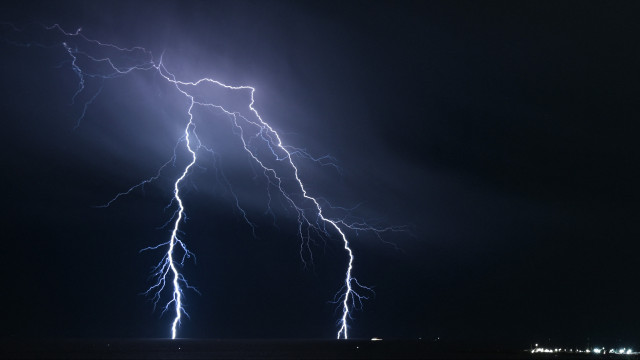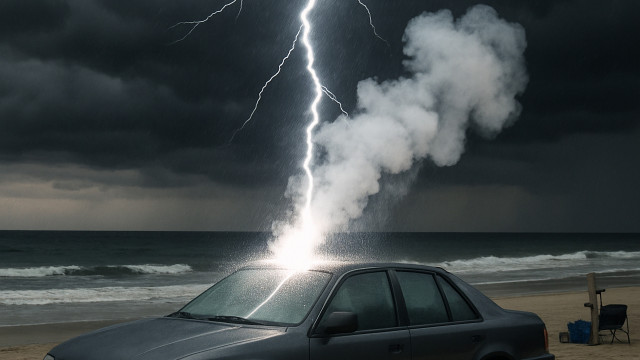Thunderstorms are meteorological phenomena primarily associated with the approach and passage of cold fronts, such as the one that crossed mainland Portugal on Wednesday, causing thousands of lightning strikes. For a thunderstorm to form, three conditions must be met: atmospheric instability, high humidity, and the ascent of air masses.
During meteorological storms, more violent and destructive events, such as lightning discharges, often occur—commonly referred to as lightning (light) and thunder (sound).
In this regard, the Civil Protection Municipal Service offers some advice on how to act in the event of one of these meteorological phenomena.
How to stay safe:
At home
- If you are inside your home, avoid contact with metal objects and structures connected to the outside such as showers, pipes, metal doors, washbasins, and bathtub frames;
- Avoid contact with electrical outlets, electric cables, and electrical appliances like telephones, computers, and televisions;
Outside
- If the time between the flash and the thunder is less than 30 seconds, seek a safe place to shelter as the storm is nearby;
- Avoid elevated places, open fields, or positions above the average tree level;
- Avoid staying near isolated trees, picnic shelters, gazebos, as well as communication towers, power poles, metal fencing, and isolated tents;
- Large buildings are safer than smaller, open structures;
- If you are in an open area, do not lie completely flat on the ground; instead, kneel with hands on the ground and head low between your arms;
- If you are in a high and steep location like a mountain, sit on a rock or any non-metallic object. Tie a rope around your ankle, which allows anchoring if lightning strikes nearby;
- Avoid golf carts and any type of convertible. Vehicles with all windows closed, such as cars, trucks, vans, and buses, provide good shelter from lightning, but avoid contact with metal surfaces inside and outside the vehicle;
- Avoid bodies of water like lakes, oceans, pools, and rivers;
- Wait for the storm to pass. Lightning generally decreases over time after the last sound of thunder but can persist for more than 30 minutes, whether the sun is shining or the sky is clear.
Do you know how to determine how far away a thunderstorm is? Here’s how
You can calculate the distance by measuring the time interval between the lightning flash and the moment you hear the thunder. As light travels at about 300,000,000 m/s, the lightning is visible almost “instantly.” However, since the speed of sound in the air is substantially lower (340 m/s), the thunder is heard later.
Thus, the distance in meters from where the thunderstorm occurred is obtained by multiplying 340 by the time interval, in seconds, between the lightning and the thunder.
For example: if the interval is 10 seconds, the thunderstorm is 3,400 m (3.4 km) away.
Below is what experts said about the thunderstorm that hit the country early this morning:

Meteorology experts indicate that the increased atmospheric electrical activity observed during the night was not of unprecedented intensity. However, an IPMA expert states that climate change is increasing the frequency of this type of phenomenon.
Anabela Sousa Dantas with Lusa | 14:11 – 05/11/2025
And what to do if you have to drive in these conditions:

Wednesday was marked by an adverse meteorological phenomenon in mainland Portugal, with thousands of discharges. On such a day, the question arises: is it safe to drive or be inside a car during a thunderstorm?
Bernardo Matias | 13:03 – 05/11/2025




